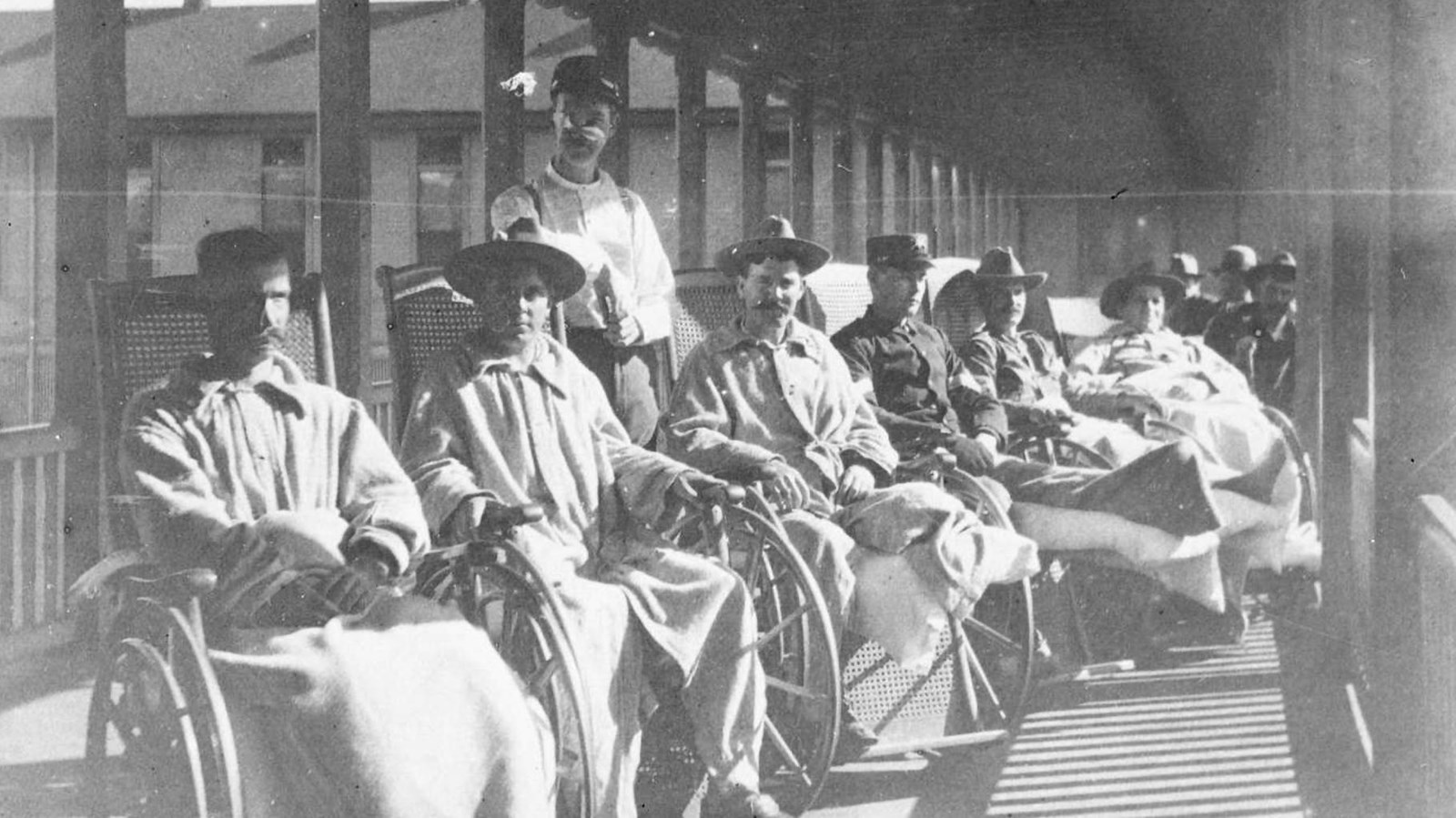Last updated: March 2, 2021
Place
Letterman Hospital: Philippines War Tour

The Presidio were ill-prepared to handle sick soldiers from the thousands of volunteer regiments that poured into the post in 1898, and soldiers complained for poor care.
"The medical service was very poor. When we arrived in California we were sent to Camp Merritt, near the coast and a very unsanitary place, heavy fog and the men began to develop chest colds and several died from pneumonia. I was sick, very sick, and went to the field hospital and all they did for me was to soak some cotton in alcohol, put it in a glass, set it afire, and cupped my chest which did nothing for me, but I visited the home of some people there and the lady of the house realized how sick I was and applied red flannel cloths to my chest with camphorated oil and I then got well fast."
As sick soldiers overwhelmed the 50-bed post hospital, an Army General Hospital was requested for the Presidio. Later known as Letterman Hospital, the general hospital was established in 1899 to receive sick troops en route to and from the Philippines and to care for patients transferred to the States from the Manila hospitals. The largest number of patients in one day was 1,040 on August 2, 1899.
When Maj. Alfred Girard took command of the still incomplete general hospital in July 1899, he had mixed emotions about his new command, writing:
"The location of the hospital has its advantages and disadvantages. The advantages are proximity to the city, to the post of the Presidio, and to the camps which were to shelter the troops assembling for duty in the Philippines and the volunteers returning therefrom. The disadvantages are exposure to the high winds and fogs, the low ground with swarms of mosquitoes and flies, and the proximity to the liquor shops adjoining the Presidio."
The role of the hospital grew and by 1905 it was also handling special cases from all over the United States - obscure tropical diseases; serious surgical cases; and eye, ear, nose, and throat cases throughout Western military installations. In 1904 Surgeon Maj. William Stephenson pleaded for a third doctor at the Presidio because it now had one of the largest military populations in the Army.
In addition to the 1,600 men stationed here, hospital surgeons care for a large contingent of active and retired officers' and soldiers' families, servants, widows, and families of soldiers in the Philippines living near the reservation. Hospital doctors also sit on examining and courts martial boards, supervise the medical needs of troops en route to and from the Philippines (vaccinations, sick calls, etc.), and complete extensive administration work.
The Army responded by assigning a third post surgeon to the Presidio at the end of 1904. Daily activities at the hospital are described in an August 1900 newspaper article:
"It seemed like a special visiting day at the General Hospital, so great was the number that applied for passes. The fruit peddlers disposed of their stock long before the day was over, and every sick and convalescent soldier could be seen contentedly munching the grapes and pears given them by the kind-hearted crowd."
The General Hospital also dealt with a different kind of sickness from the war as reported on in this July 1900 news article.
"Reports of hundreds of mentally diseased soldiers returning from the Philippines are exaggerated. The landing of eleven insane men from the transport Sheridan brings to sixty-four the number of insane patients returned from Manila. There are now close to sixty-five thousand men in the Philippines, and there are enough State volunteers returned to bring the total up to nearly one hundred-thousand, yet insanity patients have numbered less than one hundred. The causes of insanity are not numerous. They comprise heat, drink, hard campaigning, homesickness and loose ways of living. There is also a class of insanity patients who swell the number materially, but who have merely decided upon that method of escaping the service."
